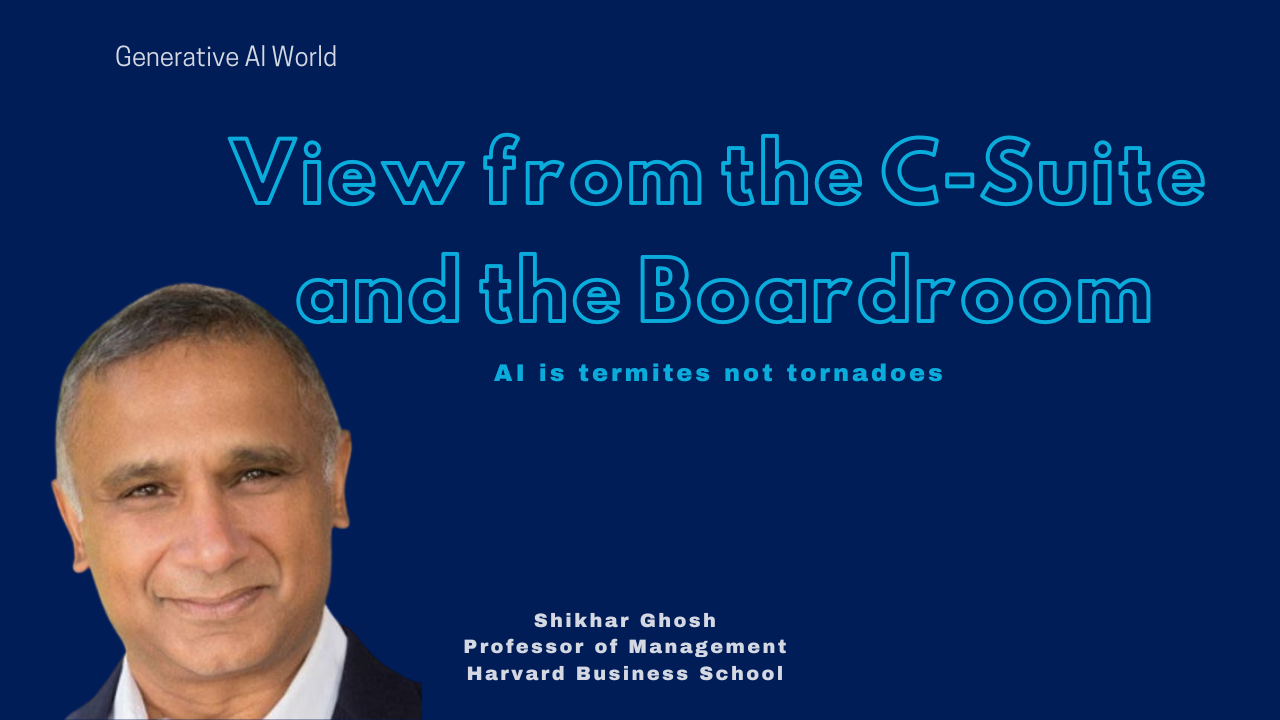The Cost of a Poor LLM: Critical Factors Executives Should Consider When Evaluating GenAI Tools
As a leader at the helm of your organization, adopting Generative AI and large language models (LLMs) can feel like an innovative leap forward. From...
GenAI isn’t just faster content creation — it’s a force multiplier for organizational learning. When people and machine agents collaborate in everyday language across unstructured data (text, images, numbers, audio), knowledge creation, transfer, and reuse compound across the enterprise. The result: step-change gains in innovation and efficiency when leaders design for it deliberately.
The pace is only accelerating. With GPT-5’s launch, OpenAI pushed a “quadruple play” (frontier features, massive distribution, open-source posture, enterprise readiness) that compresses cycle times and raises the strategic bar — what some are calling the advent of AI Time. Waiting now widens competitive gaps.
Most companies still ask, “Where do we start?” A practical answer is WINS work — the activities whose outputs are Words, Images, Numbers, and Sounds. That’s where GenAI delivers immediate leverage because the inputs/outputs are inherently generative and remixable. Inventory the cost and value tied to WINS across functions (e.g., marketing copy, legal contracts, pricing models, call transcripts) and you’ll see natural starting points for ROI-positive deployments.
Many GenAI struggles come from treating the tech like traditional automation. GenAI behaves more like an assistive agent in a back-and-forth with people. Rethink processes so they support iterative prompts, critique loops, verification, and handoffs between humans and models (“design for dialogue”). You’ll reduce failure modes and make the system — and your people — smarter over time.
Beyond picking a few projects, winners invest in six disciplined capabilities that turn pilots into a portfolio that compounds learning:
A real-world pattern: Blue Cross Blue Shield of Michigan created a cross-functional AI leadership team, delivered dozens of production AI apps, and used GenAI to standardize IT contract terms — yielding >$10M in savings — while building repeatable muscles, not one-off wins.
Employees are moving faster than policy. 46% of knowledge workers say they wouldn’t stop using GenAI even if it were banned, and 35% are paying out of pocket for AI tools at work. You can’t buy culture or capability — you must build it — but you can channel this bottom-up energy with clear guardrails, training, and sanctioned tools.
1) Declare the strategic intent (30 days).
Articulate how GenAI will advance core strategy and where you’ll win first (e.g., faster sales cycle time, lower claims leakage, richer self-service). Appoint an AI Leadership Team spanning business, data, tech, risk, and HR with clear decision rights. Signal that GenAI is an organizational capability to be grown, not a tool to be bought.
2) Map your WINS work and value pools (30–45 days).
Inventory the top 30–50 WINS workflows across the enterprise: what’s produced (words/images/numbers/sounds), volumes, error costs, cycle times, compliance sensitivity, and who consumes the outputs. Quantify the “WINS cost base” and rank by business value and feasibility. This becomes your living opportunity backlog.
3) Redesign three signature workflows for dialogue (45–60 days).
Pick high-value, high-learnability flows (e.g., contract review, benefits coding, pricing memos). For each, specify: (a) the human–AI turn-taking, (b) the verification gates, (c) data needed, (d) escalation paths. Treat prompts, checklists, and evaluation rubrics as first-class process assets.
4) Stand up the six disciplines as a lightweight “AI PMO.”
Create a small enablement team to embed: behavior change (role expectations, incentives), controlled experiments (A/Bs, holdouts), value measurement (dashboards tied to business KPIs), data management (catalogs, privacy), human capital (prompting clinics, office hours), and systems thinking (architecture patterns, reuse). This is how you turn projects into a portfolio that learns.
5) Launch controlled experiments — instrument outcomes, not demos.
For each workflow, set success metrics (e.g., cycle time, quality, NPS, leakage) and run time-boxed tests. Require pre-mortems and red-team reviews before expansion. Capture reusable prompts, patterns, and evaluation datasets in a shared library.
6) Govern for reality: legal, risk, and BYOAI.
Publish an explicit policy that embraces sanctioned tools, safe data handling, and disclosure of AI assistance — and channels “shadow AI” into approved paths. Train managers to coach usage rather than punish it. The goal: reduce risk and harness grassroots momentum.Forbes
7) Build skills at scale (and keep them fresh).
Follow Wolters Kluwer’s lead: bake in recurring time (e.g., one hour weekly) for peer-led, use-case-based learning; rotate facilitators; and track skill adoption by role. Make “prompt + critique + verify” a muscle everyone practices.MIT Sloan Management Review
8) Choose platforms for AI as the new UI.
Customers and employees increasingly want answers, not menus. Prioritize conversational and agentic interfaces where they remove friction — and pair them with back-end instrumentation so you can observe, optimize, and govern end-to-end. Treat AI interfaces as products with owners, roadmaps, and service-level expectations.
9) Modernize data for WINS velocity.
Give teams governed access to the text corpora, image libraries, numerical tables, and audio needed for targeted generation and retrieval-augmented generation (RAG). Focus first on the few data domains that power your top WINS workflows; expand outward as measurement validates value.
10) Scale what works; retire what doesn’t.
Adopt a “prove and move” cadence: once a workflow clears value and risk gates, productize it, template the assets, and roll it to the next business unit. Publish a living catalog of validated use cases, prompts, and policies. Archive or sunset experiments that don’t pay, and capture the lesson learned for reuse.
11) Bring in the robot co-worker — thoughtfully.
As agentic systems and physical automation mature, many roles will have an AI or robotic “teammate.” Plan job design, safety, escalation, and reskilling now; map which steps in each process shift to agents versus people, and how you’ll supervise and audit them.
12) Install the compounding flywheel.
Close the loop: every deployment feeds your knowledge base (prompts, evaluation sets, architectural patterns, guardrails), which lowers the cost and time of the next one. This is how leaders like BCBSM moved from lagging to leading on tech efficiency and GenAI deployment — by building capability that compounds.
You can buy models and tools, but you can’t fake capability. Advantage accrues to organizations that treat GenAI as a system — strategy, workflows, data, skills, and governance — not a stack of pilots. The leaders who move now, design for dialogue, and invest in the six disciplines will discover that GenAI doesn’t just do tasks; it teaches your company to learn faster than competitors, which is the ultimate moat.

As a leader at the helm of your organization, adopting Generative AI and large language models (LLMs) can feel like an innovative leap forward. From...

At the Generative AI World conference September 12-13, we heard from serial entrepreneur and HBS Professor Shikhar Ghosh about AI, and his...
Trusted by companies and vendors around the globe - we help you cut through the noise and stay informed so you can unlock the transformative power of GenAI .
Join us at this year's Generative AI World! Hear from enterprise AI leaders who are achieving meaningful ROI with their GenAI initiatives and connect in-person with the GAI Insights members community including C-suite executives, enterprise AI leaders, investors, and startup founders around the world